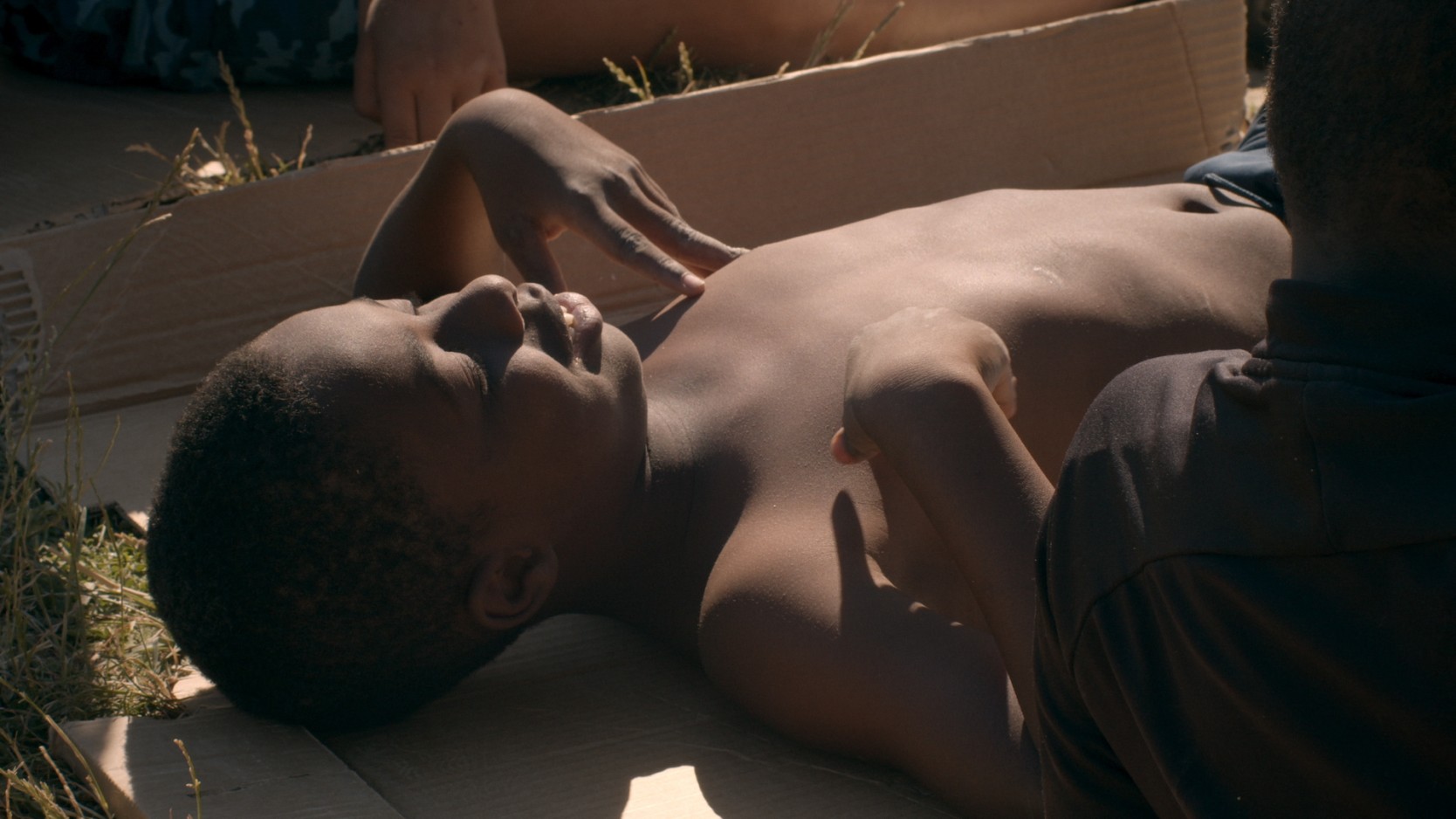In the second year after its introduction, the Berlinale section Encounters remains kind of a mystery. The problem that has accompanied the festival for a long time, namely that it is not clear why which film is shown in one section and not in another, unfortunately continues here. Nevertheless, in 2021 the colorful section once again brought together fascinating and sometimes visually challenging contributions. However, it was the quietest and, at first glance, most inconspicuous film of the section that stayed in my head for a long time.
In We (Nous, 2021), French documentary director Alice Diop, who grew up in a housing project in Aulnay-sous-Bois, attempts a definition of the titular term that cleverly avoids demarcation and instead builds bridges between worlds that are in close proximity but often observe each other from a distance, rather suspiciously and controllingly through metaphorical binoculars. She sets her film around the RER B train line—which crosses the sprawling region around the center of Paris on the north-south axis—and unobtrusively and sensitively shows snippets of life in loosely connected episodes that gradually raise questions about the community.
A hunt in Fontainebleau, where the hunting community tries to spot the prey (which remains invisible to the audience) on the horizon with the help of actual binoculars. A car mechanic sleeping in a van who has not visited his home country, Mali, for 20 years. The Holocaust memorial and former collection camp in Drancy, whose building complex was initially constructed in the 1920s as part of social housing. Young people in housing projects, bored, listening to music and not knowing what to do with themselves. The public reading of King Louis XVI’s will, written on 25 December 1792 in the royal prison Temple, and people listening devoutly and close to tears. The episodes of Nous are talking about inequality and isolation, discrimination and the search for stability in the confrontation with the national past as well as the desire for hierarchical order. And although the seperations of the episodes and the people seem to prevail at first, Diop draws tender lines of connection in her film.
The people she portrays do not speak much and the things surrounding them are often silent as well. And yet—or precisely because of this—they tell of the present and the past and how both are connected and shape lives. Alice Diop also establishes connections that make history and the present speak and create dialogue, by carefully weaving herself and her family history into the patchwork of the film. Old Hi-8 recordings first show memories of her parents. In them, her father can be heard saying that he never lacked work and that life in France was fine. Nevertheless, he and his wife signed an insurance policy to bring their bodies back to Senegal after their deaths. Their daughters were also supposed to sign this policy, although Alice Diop had no plans to be buried in Senegal. When this conflict becomes an issue, it is one of the most haunting moments of the film.
In addition, the director follows her sister, who works as a nurse and makes deeply touching home visits to elderly people in the film. It is precisely in these images that Diop’s approach and goal becomes clear: to search for inequalities and similarities in socio-economic environments; for example, that people who immigrated to France and their descendants are just as much a natural part of French history as the kings of the Grande Nation buried in the basilica of Saint-Denis and commemorated in church services. In a time of individualisation processes that sometimes lead to isolation and the attempts of demarcation that can arise from identity politics, Nous is the most affectionate way of saying “we,” far away from falling for cheap patriotic slogans of cohesion and belonging.
In the end, Diop once again shows the hunting community. The preparations have been completed and the hunt is on. The fact that these hunting scenes enclose the film like brackets, and that the film thus repeats the principle of the driven hunt on a formal level—which also functions by means of an enclosure—can certainly be read as a commentary on the cracks in French society and a collective sense of identity. Here, binoculars finally become a metaphor when distance is overcome with the help of a technical apparatus and something like proximity is (artificially) created.
Ricardo Brunn
© FIPRESCI 2021
Edited by Robert Horton

